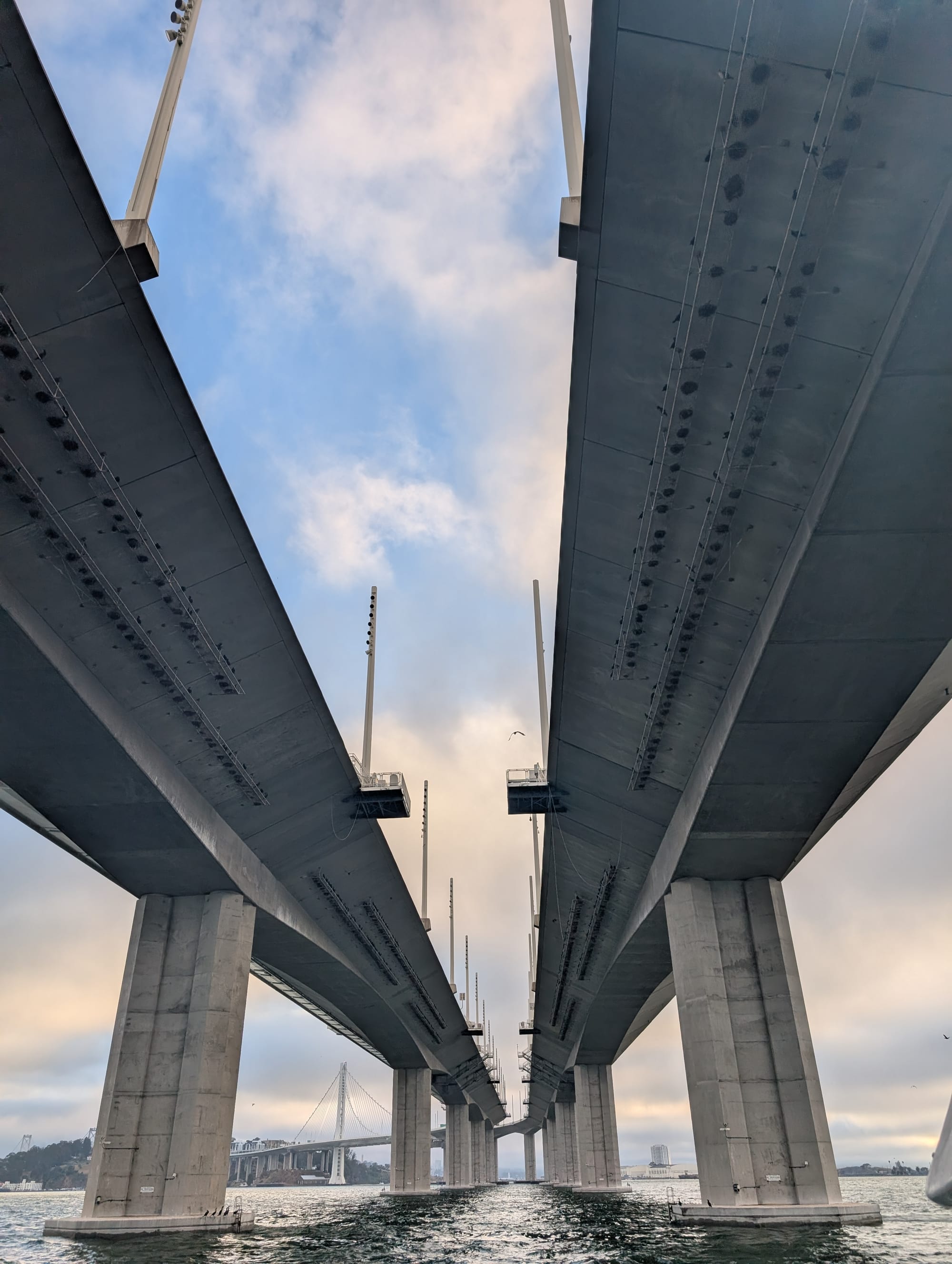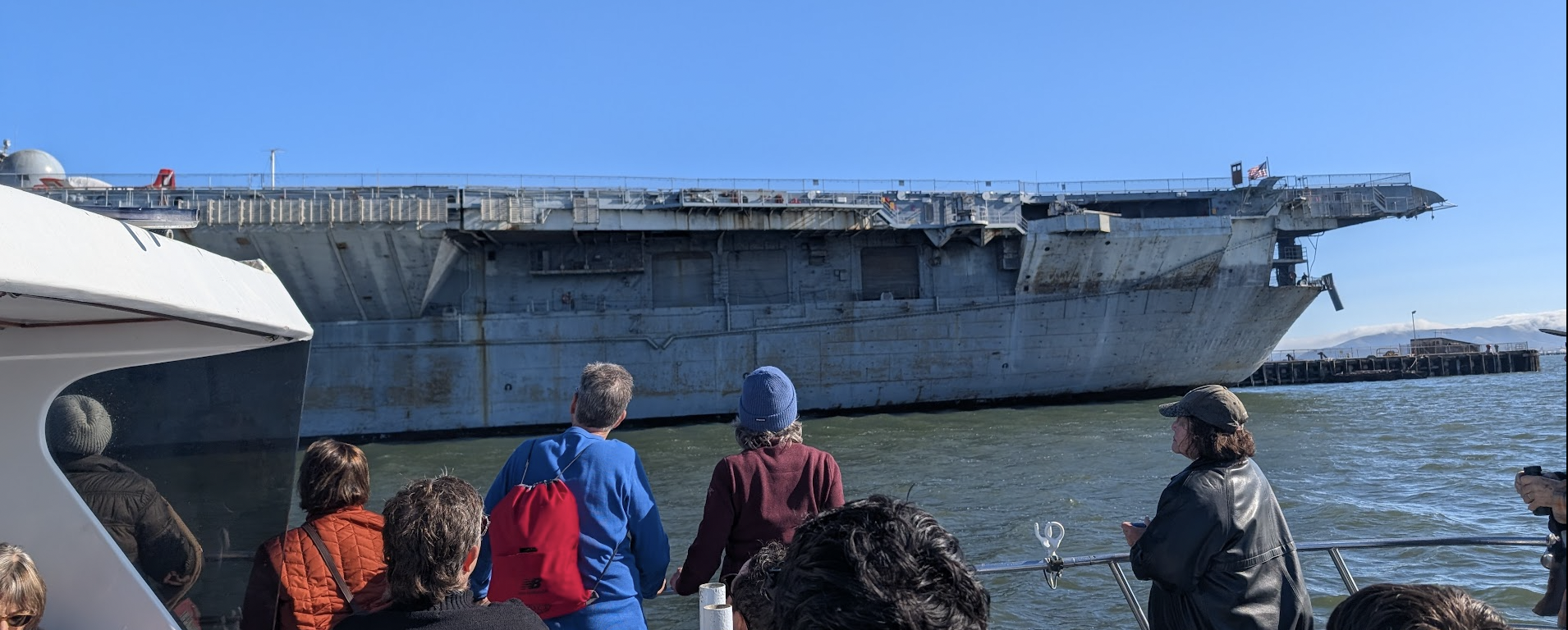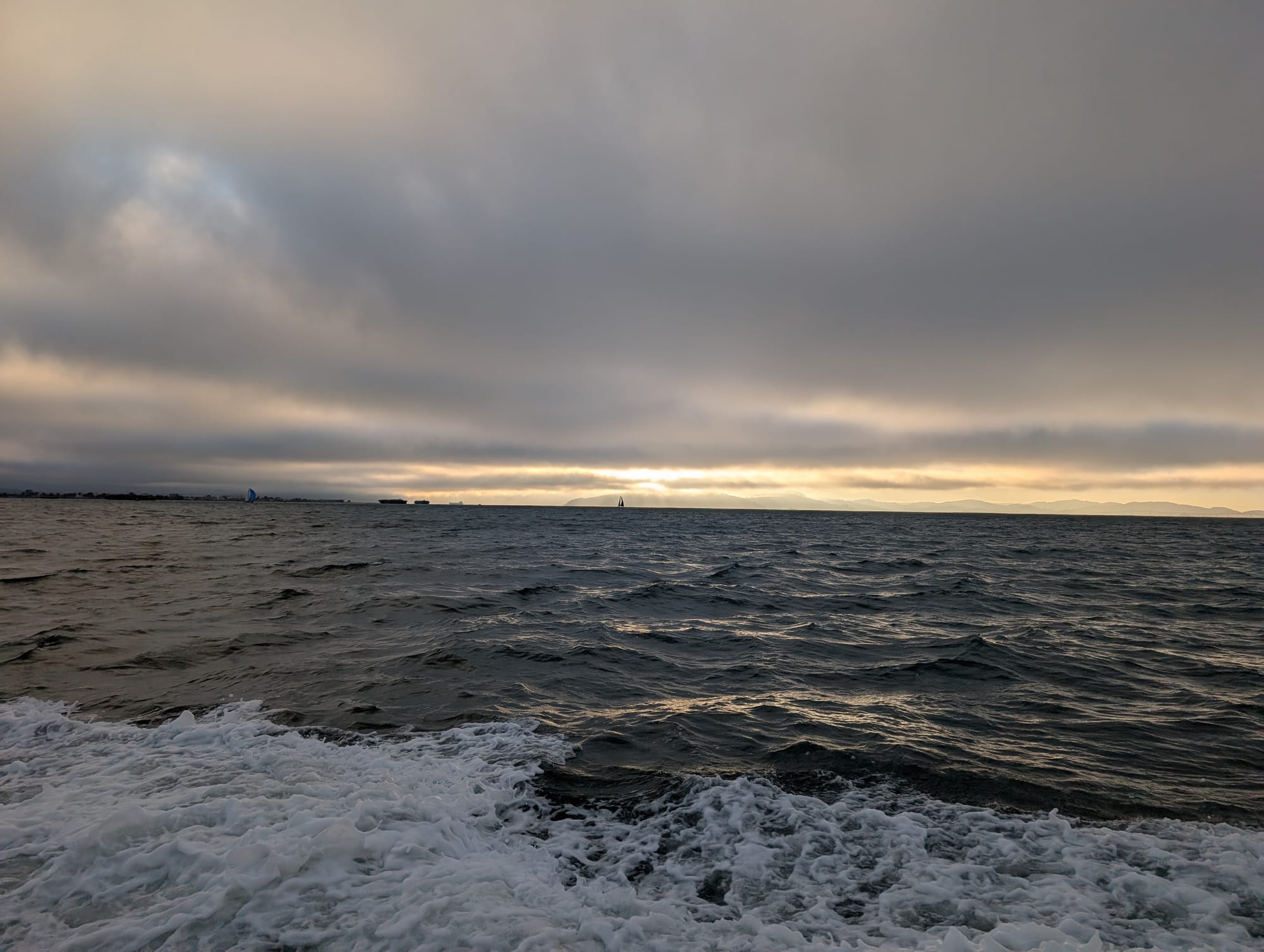Everyone was laughing when the cormorants shat on them, like a blessing from above, and even afterwards, they were still smiling when it was described like an explosion, barely a minute after we’d been warned that the cormorants do not wear diapers. Spirits were good after being on a boat for three hours with Liam O'Donoghue, Mr. East Bay Yesterday himself, a man who likes people, who has been doing these tours for years and still takes pictures of container ships with the enthusiasm of a first-timer. You’ve got a souvenir! he said to his beshitted guests, and they did, happy to have brought his words to life just a beat after he had explained that the vast rows of double-breasted cormorants were a sign of how much life is in the bay.
So many birds, just eating and fish and shitting all day, he proclaimed, and everyone was delighted by it: They used to live on the old bridge that isn’t there anymore, all those great birds; now they live here, on this one, and seem to be thriving.

“Transformation” was the theme yesterday. Most of Liam’s stories and anecdotes were about how one thing that was one thing became another, in a city and region no more defined by change and transition than every other city or region, but still pretty knowable by the ghosts of what used to be there, wherever whatever it is is that is there now. Inviting us to imagine a landscape dotted with Ohlone shellmounds, and swarms of birds like towers that would blot out the sun, we proceeded around the still very-active port, past vast container ships, living and dead cranes, and old haunted castles like the USS Hornet.
And why wouldn’t a monstrous death machine like the USS Hornet be exactly as haunted as any medieval castle you might pick? With a little historical distance, what important distinctions are there between the various different ruined architectures of war that humanity has built, used, abandoned, and now floats by, with wide eyes and credulous hearts?

We flowed into the estuary, past Jack London Square, along an industrial landscape that didn’t exist a century ago and mostly doesn’t exist now, past houseboats and floating houses (“there’s an important difference!” Liam warns us, and tells us about the latter’s struggles with their landlord); a hot-tub boat—some four hundred dollars (oh that’s a lot) but for six guests (that’s not too bad)—and various waterside watering holes he describes with gusto, and I explain to my companion that Brotzeit’s hamburger is actually really legit, as we split a raisin cookie I remembered to buy just before leaving (at Randy’s market, near our embarkation point).
A lady dances at us from a dock, first seated and then when she sees that we see her, she stands up and goes all in. Boiling and steaming pots, tended, on a floating dock, next to tents and chairs and a bicycle. There’s the ugliest statue in all of Oakland, Liam tells us, and the Miller Milling mill, where the geese gather to eat spilled flour, as the grain trains pull in; here and there, as we flow on, is where there once was some factory or another, that did something or another, but mostly doesn’t now; here is where, today, there are massive housing developments filled with people, gathering here to eat whatever they can find.
At the start of the tour, the sun was warm and you didn’t fear the splash and spray of the bay, as he told us about the invention of the squeejee; by the end of the tour, the chill had set in, as he tlls us about all the new ferry lines popping up—where they once had been, but were decommissioned until the earthquake and traffic made people remember that being on boats is a lot of fun—as we get jostled in the wake of a container ship tugging by.
It had all gotten very grey, and it was now cold enough that you were ready to pull back into Emeryville, ready to find something hot to eat, and to get the heck back to wherever it is that live, now, wherever it is that you eat and shit, now, instead of wherever you ate and shat before.

